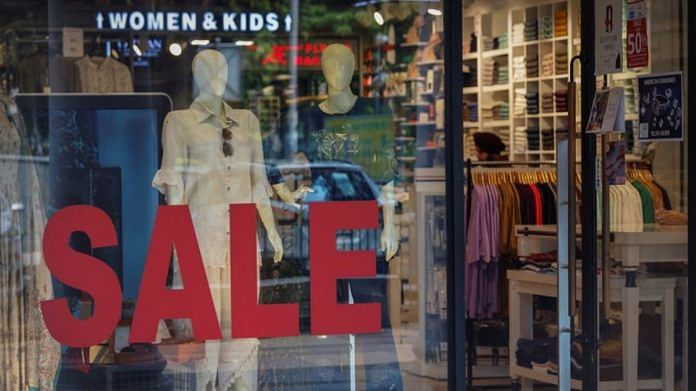New Delhi/Mumbai – Across India’s malls and high streets, the mood at fashion shops is sombre – foot traffic is down, sales are low and many brands are embarking on steeper-than-usual discounts for longer-than-usual periods of time.
The culprit? Sky-high food inflation after erratic monsoon rains damaged crops and disrupted supply chains.
Prices for tomatoes have rocketed, at one point close to five times since June, while those for onions, another staple in Indian cooking, have risen 80% in some areas like New Delhi. Food inflation for July hit a staggering 11.5%, far more than 4.6% in June and marking a three-year high.
As purse strings tighten, the pain felt by India’s clothing and shoe retail sector – worth an estimated $62 billion in 2022 according to Euromonitor International – is fanning concerns about the health of consumer spending which had already been slowing even before the shocking rises in food prices.
At a Zink London outlet in a Mumbai mall, for example, staff at the domestic women’s clothing chain have been calling 10 customers each per day and sending product pictures via WhatsApp in an effort to bolster sales, according to a store manager who declined to be identified.
Interviews with managers at 25 other fashion outlets across four Indian cities who spoke with Reuters on condition of anonymity painted a similar downbeat picture.
Popular Indian and foreign brands including shoe retailers Japan’s Asics and Skechers USA have been offering steep discounts, some as much as 70%, far bigger than normal and have also been extending their sale periods, said several store managers.
Even when customers do purchase fashion items, they buy far fewer than they once would have, some of the managers also said.
Zink London, Asics and Skechers did not respond to Reuters requests for comments.
The downturn in fashion spending has also been accompanied by a slide in spending at restaurant chains like Domino’s.
That said, Indian consumer spending is not uniformly down in the dumps. The country’s biggest cinema operator PVR Inox recently clocked its highest daily box office revenue of $5 million, driven by some hit Bollywood offerings.
Wealthier people also continue to spend with premium SUV sales at a record high.
But worries are mounting about the threat that inflation and high interest rates pose to consumer spending.
“The biggest threat to India’s growth will come from private consumption, which constitutes about 60% of GDP, which is weak already,” Deutsche Bank economist Kaushik Das wrote in a report this month.
The bank has forecast India’s economy to log slower growth of 6% this fiscal year compared to 7.2% last year.
In some encouraging signs, tomato prices have eased off peaks and India’s central bank chief last week said vegetable prices, which have begun to soften, will decline from September.
Retail outlets and industry executives are also hoping that the upcoming festival season – including Diwali in November when people like to make big purchases for gift-giving and for themselves – will bring some sales relief. But others are not necessarily optimistic.
“The expectation is always there that people spend during festive season … But we will have to wait and see what people spend on since the inflation factor has also come in,” said Madan Sabnavis, chief economist at Bank of Baroda.
For now, consumers say they need to be more frugal given the increase in grocery bills.
“We are looking for branded clothes to fit our budget and are visiting showrooms where there are maximum discounts,” said Anjali Mohanty, a housewife in the eastern city of Bhubaneswar who was shopping for jeans for her son.
“We have to adjust our family expenditure.”
(Reporting by Tanvi Mehta and Riddhima Talwani in New Delhi, additional reporting by Dhwani Pandya in Mumbai, Praveen Paramsivam in Chennai, Jatindra Dash in Bhubaneswar, Saurabh Sharma in Lucknow; Editing by Aditya Kalra and Edwina Gibbs)
Disclaimer: This report is auto generated from the Reuters news service. ThePrint holds no responsibilty for its content.
Also read: India’s food price surge forces government measures to improve supplies



